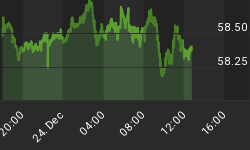"Real and Illusory Credit" bridged the destruction of phony, 1920s, Federal-Reserve wampum to Bernard Connolly's evaluation of today's deadly path. The aftermath of the twenties, as described in David A. Stockman's The Great Deformation: The Corruption of Capitalism in America, crippled capital spending. Plant and equipment investment tumbled by nearly 80 percent between 1929 and 1933. Inventories were liquidated. There were no buyers. Employment and wages collapsed.
An ameliorating tendency is never mentioned by Bernanke, "the Great Historian of the Great Depression." Prices also dropped, which had traditionally been true in depressions. This was well known and understood as inevitable to rebalancing an economy that had produced beyond what could be bought at then-current prices. Bernanke and his comrades have destroyed history, at least until history rebounds and destroys them.
Bernard Connolly explained that today's central bankers have decided consumption must not flag despite the necessity - history shows this - of a decline in consumption after a business peak. If the professors had understood their limits, not taken control of prices, especially the price of money (interest rates), industries, companies, and products that grew faster than could be sustained would have already been combined or liquidated.
Quoting Connolly, the current dynamic inefficiency "reduces future consumption possibilities; and this, in turn, means that much of the recent and current capital formation, notably in the United States, has been based on excessively optimistic expectations of future demand." Such attempts "to bring spending forward and to avoid a near-term collapse simply reduce the (realistically) anticipated rate of return on capital still further, in a vicious downward spiral."
Note the historical precedent in Stockman's book. This must happen but will be more painful than if academics had never entered central banking. The protracted issuing of unproductive debt and sustained, false prices (the market signals to businesses and buyers alike) will cascade. Assets, and their prices, will take note.
An attempt to interpret this fate adds another layer in the valuation of companies. For instance, in the May 2, 2013, High-Tech Strategist, Fred Hickey wrote: "EMC, the world's biggest supplier of computer storage equipment, slightly missed sales and earnings estimates for Q1. EMC's revenue growth (5.6%) was the slowest pace of growth since the 2009 recession. According to CEO Joe Tucci on the conference call, customers are 'still being cautious with their IT spending to be sure.' 'The customers are for sure 'sweating their assets' more - it's a term we use. They are keeping them longer,' Tucci explained. Tucci also noted that many enterprise customers are now requiring higher executive approvals before signing off on contracts."
The May, High-Tech Strategist issue contains a litany of technology companies fighting a battle against an uncooperative world economy. This presents the question of how companies will fare after central banking funny-money and illusory-credit schemes fail. This is not "if," but "when."
Just how useless, wasteful and destructive is Bernanke's gizmo? Gary Shilling's May 2013 Insight shows the increase in real GDP per dollar of incremental debt was $4.62 (of additional GDP for each additional dollar of debt) from 1947-1952; $0.64 from 1953-1984; $0.24 from 1985-2000; and $0.09 for each dollar from the fourth quarter of 2001 through the fourth quarter of 2012: an extra nine cents of production for every dollar of debt. Not a fraction of this will ever be paid off, short of a Weimer inflation. (Shilling used Ned Davis Research and Federal Reserve data.)
EMC sales and profits have been artificially lifted by businesses that can borrow at 3% but should no longer exist. Their recalibration remains in the future. Those businesses employ workers who buy products produced by P&G. And so on. Government transfer payments have prevented the economy from sky diving. "Policymakers" have employed this modus operandi since the millennium.
After the tech bust in 2000, the percentage of sales by tech companies to the government rose sharply. That saved them. Despite the recent attempt to brainwash the electorate into believing the U.S. budget deficit is no longer a problem, that is only true as long as the Federal Reserve continues to buy the majority of U.S. Treasury auctions.
Parenthetically, the TIC (Treasury International Capital) data released May 15, 2013, for the month of March 2013, shows China, Japan, Taiwan, Singapore, and India were net sellers of dollars. Andy Lees AML Macro Ltd. writes: "Japanese holdings were down USD0.5bn and have gradually been falling since October last year. This may just be rotation into other assets, but it may also be a reflection of a current account swinging into deficit in Japan and question marks over the Chinese data." Whatever the case, if the New York Fed trading desk takes a lunch break in Battery Park, the dollar will slip to 40 on the dollar (DXY) index (currently 83.61).
Not to pick on EMC, "the world's biggest supplier of computer storage equipment" bears advantages during the worst of depressions, but the loss of central-banking support will sharply reduce its sales, thus inventory, thus capital equipment (or, R&D, for a software company). The consequent loss of jobs, consumption, and falling asset prices will slide "still further, in a vicious downward spiral."
Correction: In Real and Illusory Credit, it was in 2012, not 2013, when the Federal Reserve released its Survey of Consumer Finances that showed the wealth of American family was $77,000 in 1992, rose to $126,000 in 2007, and fell back to $77,000 in 2010.
Frederick Sheehan writes a blog at www.aucontrarian.com

















